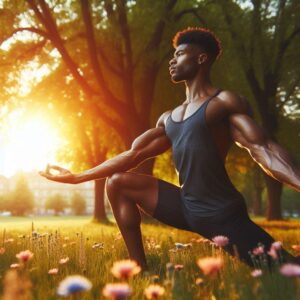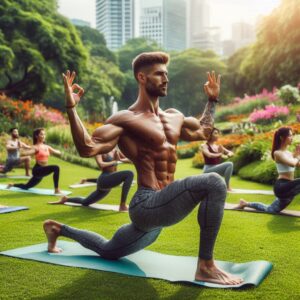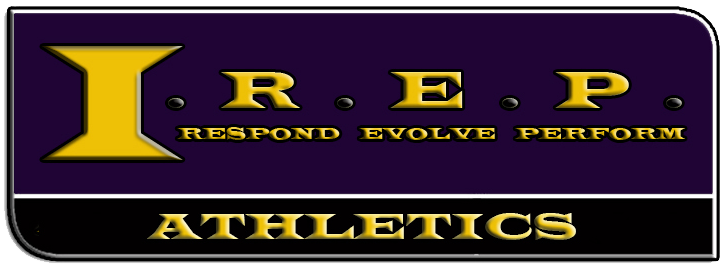The most obvious yoga benefit is enhanced flexibility, which can prevent injuries and improve performance. Yoga targets core strength, which is vital for maintaining proper form during long bouts of activity. It aids in mental focus, promoting a calm and centered mindset.
Top Yoga Poses for Flexibility
The Down Facing Dog is a pose that targets various muscle groups, including the hamstrings, calves, shoulders, and back. To get into this position, begin by placing your hands and knees on the ground. Align your wrists directly beneath your shoulders and your knees directly under your hips. Tuck your toes and, as you exhale, lift your hips toward the ceiling, forming an inverted V-shape with your body. Press your heels toward the floor and lengthen your spine while keeping your head aligned with your arms. This pose effectively reduces stiffness and enhances flexibility in the posterior chain of the body.
The Pigeon Pose is useful for releasing tension in the hip flexors and glutes, areas that can easily become tight from activities like running and cycling. Begin in a downward dog position, then bring your right knee forward to your right wrist while extending your left leg behind you. Ensure your hips are squared toward the front of your mat. Lower your torso over your right shin and extend your arms forward, holding the position for a few breaths before switching sides. Regular practice can lead to improved hip mobility and reduced lower back pain.
 The Standing Forward Bend is excellent for stretching the hamstrings and decompressing the spine. Begin by positioning your feet so they are aligned with the width of your hips. Exhale and hinge at the hips to fold your torso over your legs, letting your head hang down. Keep your neck relaxed and place your hands on the ground or shins. Breathe deeply, allowing gravity to enhance the stretch. This pose helps calm the mind, making it beneficial after intense workouts.
The Standing Forward Bend is excellent for stretching the hamstrings and decompressing the spine. Begin by positioning your feet so they are aligned with the width of your hips. Exhale and hinge at the hips to fold your torso over your legs, letting your head hang down. Keep your neck relaxed and place your hands on the ground or shins. Breathe deeply, allowing gravity to enhance the stretch. This pose helps calm the mind, making it beneficial after intense workouts.
The Butterfly Pose specifically targets the inner thighs and groin, which often become tight from various athletic activities. Sit on the mat, bringing the soles of your feet together, and allow your knees to drop toward the floor. Hold your feet with your hands and sit up straight, lengthening your spine. Gently press your thighs down to deepen the stretch. This pose increases blood flow to the pelvic area and helps ease muscle tension.
The Seated Forward Bend stretches the entire back of the body, focusing on the hamstrings, spine, and calves. Sit on the mat with your legs extended straight out in front of you. Inhale deeply and, as you exhale, fold forward from the hips, reaching for your feet or ankles. Keep your spine as straight as possible and hold the pose, breathing deeply. Over time, aim to go deeper with each exhale. This pose is especially effective for post-training sessions, as it aids in cooling down the body.
Extended Puppy Pose is beneficial for stretching the shoulders, upper back, and spine. Start in a tabletop position with your wrists aligned beneath your shoulders and your knees positioned directly under your hips. Walk your hands forward while keeping your hips above your knees and lower your forehead to the ground. Extend your arms fully and breathe deeply, feeling the stretch in your shoulders and spine. This pose is ideal for athletes who engage in repetitive upper-body movements, such as swimming.
Cat-Cow is a warm-up pose that significantly increases spinal flexibility and relieves lower back tension. Begin by positioning yourself on all fours, ensuring your wrists are directly beneath your shoulders and your knees are aligned under your hips. As you take a deep breath in, arch your back, raising your head and tailbone towards the ceiling (Cow Pose). As you breathe out, curve your spine upwards, tucking your chin to your chest and pulling your belly button in towards your spine (Cat Pose). Flow between these two positions to mobilize the spine and release tightness.
Yoga Poses for Core Strength
The Plank Pose is a highly effective pose for building core strength. To perform this pose, start on your hands and knees, then extend your legs back one at a time to come into a high push-up position. Keep your wrists directly under your shoulders, your body in a straight line from head to heels, and engage your abdominal muscles. Hold the position, ensuring your hips do not sag. This pose works the arms, shoulders, and back, making it a comprehensive core workout.
Boat Pose targets the deep core muscles, including the transverse abdominis and obliques. Begin by sitting on the mat with your knees bent and feet flat on the floor. Lean back slightly, keeping your spine straight, and lift your feet off the ground so that your shins are parallel to the floor. Extend your arms forward, parallel to the floor, and balance on your sit bones. For an advanced version, straighten your legs while maintaining your balance. Hold this position, engaging your core muscles to stay stable.
Side Plank is good for strengthening the oblique muscles, which are important for rotational movements and overall core stability. Start in a regular plank position. Transfer your weight to your right hand and the outer side of your right foot, positioning your left foot directly above the right. Raise your left arm towards the ceiling, forming a straight line from your right hand to your left hand. Keep your hips lifted and engage your core muscles to maintain balance. Hold the pose, then switch to the other side.
 Locust Pose is good for strengthening both the core and the lower back muscles. Lie face down on the mat with your arms along your sides and your palms facing down. Inhale and lift your head, chest, arms, and legs off the ground, keeping your gaze forward and your neck relaxed. Focus on using your core and lower back muscles to hold the pose. This pose is useful for swimmers, as it helps in building the spinal and abdominal strength required for efficient strokes.
Locust Pose is good for strengthening both the core and the lower back muscles. Lie face down on the mat with your arms along your sides and your palms facing down. Inhale and lift your head, chest, arms, and legs off the ground, keeping your gaze forward and your neck relaxed. Focus on using your core and lower back muscles to hold the pose. This pose is useful for swimmers, as it helps in building the spinal and abdominal strength required for efficient strokes.
Dolphin Plank Pose (Makara Adho Mukha Svanasana) is a variation of the traditional plank that intensifies the core workout. Start in a forearm plank stance, ensuring your elbows are aligned directly beneath your shoulders and your body forms a straight line. Engage your core as you press your forearms into the ground, keeping your hips in line with your shoulders. This pose places extra emphasis on the core muscles, offering a more challenging workout. Holding this pose helps in building endurance and strength in the entire core region.
Crow Pose (Bakasana) is an advanced balance pose that requires considerable core strength. Start in a squat position with your feet flat on the mat and your palms placed shoulder-width apart in front of you. Bend your elbows slightly and lift your hips, coming onto the balls of your feet. Place your knees on the backs of your upper arms and slowly shift your weight forward, lifting your feet off the ground. Engage your core to stabilize your body and hold the position. This pose increases arm strength and balance.
Bridge Pose (Setu Bandhasana) is an effective pose for strengthening the glutes and core muscles, including the lower back. Recline on your back, bending your knees and placing your feet flat on the ground, keeping them hip-distance apart. Stretch your arms out beside you with your palms downward. As you inhale, lift your hips towards the ceiling, pressing your feet into the mat. Engage your core muscles to keep your hips lifted and maintain the pose. This pose helps in building strength in the posterior chain, which is crucial for overall core stability.
Combining Flexibility and Core Strength
Warrior III (Virabhadrasana III) is a pose for simultaneously working on balance, flexibility, and core strength. To perform this pose, begin in a standing position. Shift your weight onto your right leg and lift your left leg behind you as you hinge forward at the hips. Extend your arms straight in front of you, forming a line from your fingertips to your lifted heel. Engage your core muscles to maintain balance and keep your body aligned. This pose strengthens the standing leg while enhancing flexibility in the hamstrings and hips.
Extended Triangle Pose (Utthita Trikonasana) balances the stretch of the legs and hips with the engagement of the core. Begin with your feet positioned wider than the distance between your hips. Turn your right foot out and extend your arms parallel to the floor. Reach your right arm towards your right foot while keeping your left arm stretched towards the ceiling. Engage your core to support the torso and maintain balance. This position stretches the inner thighs, groin, and hamstrings while activating the core muscles for stability.
Half Moon Pose (Ardha Chandrasana) Begin by standing with your feet together and then step your right foot forward, bending your knee slightly. Place your right hand on the ground a few inches in front of your right foot. Lift your left leg parallel to the floor and extend your left arm towards the ceiling. Engage your core to maintain the balance and alignment of your body. This pose stretches the hamstrings and opens the hips while requiring significant core stabilization.
